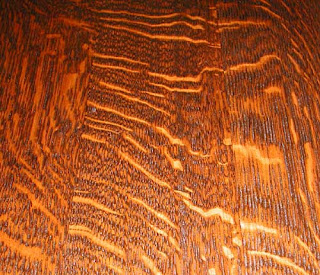 There are approximately 150,000 Amish in North America, with the largest group residing in Ohio and other large populations in Pennsylvania, northern Indiana and Iowa. They are known as the plain people because of the plain colored clothing they wear. The Amish speak Pennsylvania Dutch among themselves and live within highly personalized relationships, and avoid anything more than casual contact with strangers. They are happy living without the conveniences of the 21st century such as electricity, cars and telephones.
There are approximately 150,000 Amish in North America, with the largest group residing in Ohio and other large populations in Pennsylvania, northern Indiana and Iowa. They are known as the plain people because of the plain colored clothing they wear. The Amish speak Pennsylvania Dutch among themselves and live within highly personalized relationships, and avoid anything more than casual contact with strangers. They are happy living without the conveniences of the 21st century such as electricity, cars and telephones.The Amish follow the Christian faith as any other person of the Christian faith. The Bible is the main study book. Their beliefs do not allow them to pose for photographs because they feel it violates the biblical teaching against making graven images. They also don't believe in photographs for fear that it will promote self-pride. Many will put their hands or hats over their faces, look away or take evasive action to avoid having their picture taken.
The history of these people can be traced back hundreds of years and unlike most cultures that evolve to adapt to the ever-changing world, the Amish have stayed true to their roots. The Amish religion originated from the Mennonite religion, which encourages nonviolence, nonviolent resistance, and pacifism. The Mennonites are a group of Christian Anabaptist denominations whose roots began in central Europe. When Swiss-German Mennonite leader, Jacob Amman insisted on the practice of Meidung, which is the strict shunning of excluded members, this brought about a division in the Swiss Mennonite movement in 1693 and led to the establishment of the Amish.
 Amman felt the Mennonites were drifting away from their beliefs. Nevertheless, the two groups are still very closely related and the two groups may many times live right next to each other. Their roots and standards for a simple life and diligent work are very closely aligned and have remained much the same throughout the centuries. Among their lasting traditions, their dedication to the production of heirloom quality furniture has remained true.
Amman felt the Mennonites were drifting away from their beliefs. Nevertheless, the two groups are still very closely related and the two groups may many times live right next to each other. Their roots and standards for a simple life and diligent work are very closely aligned and have remained much the same throughout the centuries. Among their lasting traditions, their dedication to the production of heirloom quality furniture has remained true.Amish furniture making is mostly known for being constructed from solid wood, using no particle board or laminate, and the great attention paid to the details of the wood. Each piece of wood is hand selected and special attention is paid to the grain of the wood. Amish furniture is valued for its heirloom quality that can be passed down and valued by different generations. It first gained attention in the 1920's when early folk art was becoming popularized.
 The techniques used by Amish woodworkers do not require electricity; their tools are hydraulically and pneumatically powered by running on diesel generators. However, the detail and finish are applied by hand, therefore ensuring the finest quality. A common characteristic of Amish furniture is the five-piece English dovetail joints on drawers and steel ball bearing drawer glides.
The techniques used by Amish woodworkers do not require electricity; their tools are hydraulically and pneumatically powered by running on diesel generators. However, the detail and finish are applied by hand, therefore ensuring the finest quality. A common characteristic of Amish furniture is the five-piece English dovetail joints on drawers and steel ball bearing drawer glides.Among many other styles, the Amish create Mission and Shaker styles. The Mission style features classic, straight lines, exposed joinery and features a clean design; similarly, the Shaker style is very simple and is designed with functionality and durability in mind.
Amish craftsmen acquire their skills from generations before them. Starting early in their life, many Amish dedicate their lives to helping in the family shop where if they are woodworkers, they pick up specific design details.
Because the Amish don't use the Internet themselves personally or for business, they rely on entrepreneurs that sell the crafts and furniture that the Amish create. Retailers , like Barn Furniture Mart, often attend Amish furniture expositions in middle-America to develop relationships with the Amish craftsmen and then become facilitators between the Amish and the buyer. This makes it possible for people world-wide to enjoy high-quality Amish woodworking.













